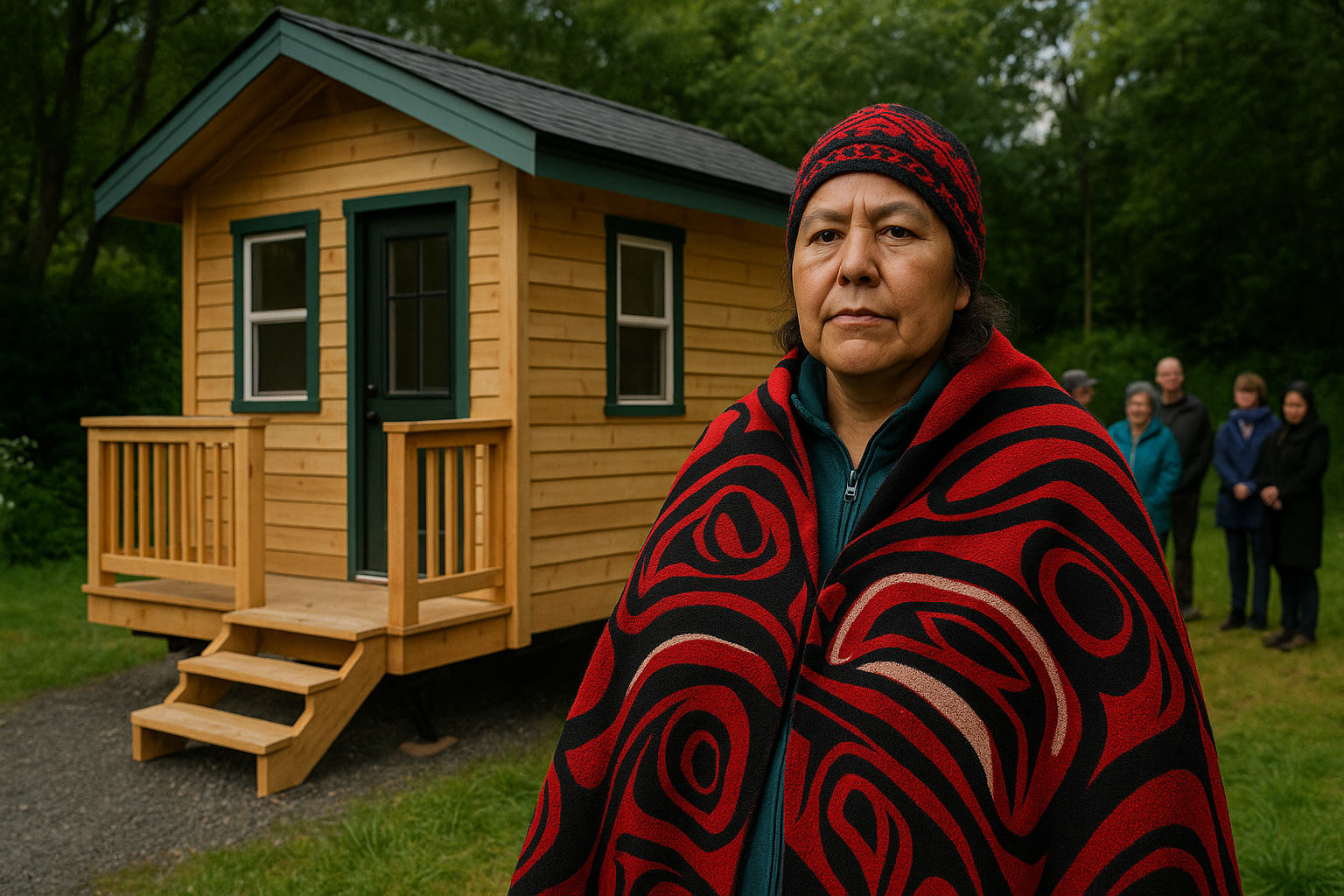
Estimated reading time: 7 minutes
Key Takeaways
- Community Unity: A tiny home, built by over 120 volunteers, symbolizes deep community support.
- Empowering Teresa Brown: The initiative provides safe accommodation for the Gitxsan woman as she champions land rights.
- Indigenous Rights & Environmental Focus: The project highlights the importance of protecting traditional territories and vital ecosystems.
- Grassroots Resilience: It exemplifies how small actions can culminate in significant movements for justice and reconciliation.
Table of contents
Introduction
In a heartening display of community spirit, a newly built tiny home is making its journey from Victoria to northern British Columbia. Meticulously constructed by Laurie Storrie and a dedicated group of around 120 volunteers at the University of Victoria’s Campus Community Gardens, this project is a beacon of solidarity. The tiny home is bound for the Gitxsan territory, where it will serve Teresa Brown, a courageous woman standing up for her Nation’s land rights as work continues on the Prince Rupert Gas Transmission (PRGT) pipeline.
As one volunteer poignantly remarked, the little things we do—they matter, and they come to build something bigger.
This sentiment encapsulates the spirit of the community, emphasizing that even modest acts can foster significant change.
Pipeline Project Background
The Prince Rupert Gas Transmission pipeline, initially approved in 2014, is an ambitious project planned to extend over 1,000 kilometres. It aims to transport natural gas from Hudson’s Hope to an export facility near Prince Rupert. Recent developments have seen the project advance under the stewardship of the Nisg̱a’a Nation and Texas-based Western LNG. In a noteworthy update, BC’s Environmental Assessment Office announced in June 2025 that pipeline construction had “substantially started,” allowing work to advance under the current permit.
This move has been perceived by many as a step towards self-determination and economic opportunity for Indigenous communities, even as it invites defensive scrutiny from other First Nations concerned about sovereignty and environmental impacts.
Indigenous Rights and Environmental Concerns
The initiative to provide a tiny home is more than a mere shelter—it is a testament to the power of grassroots action. For Teresa Brown and many others in the Gitxsan Nation, the home represents a safe space amidst the contentious backdrop of pipeline construction. Advocates underline that maintaining a presence on traditional territory is crucial, both for cultural continuity and environmental stewardship.
Critics have voiced concerns regarding the impact this development might have on vital salmon populations and the broader ecosystem. Nonetheless, supporters remain steadfast, asserting that respectful engagement and understanding are pivotal to moving forward collectively.
Hope and Collaboration Moving Forward
This inspiring story serves as a reminder that collaboration across diverse communities can spark lasting change. The tiny home’s journey north is a symbol of hope—a gentle nudge toward sustainability, reconciliation, and the responsible stewardship of land and resources.
By uniting behind Teresa Brown, communities are not only providing physical support but are also reaffirming the power of unity and the significance of even the smallest contributions. Together, we build a brighter future.
Frequently Asked Questions
-
Q: What inspired the construction of the tiny home?
A: The project was inspired by a strong sense of community and a commitment to support Teresa Brown in her advocacy for Indigenous land rights.
-
Q: Who is Teresa Brown and why is she significant in this initiative?
A: Teresa Brown is a Gitxsan woman standing up for her Nation’s rights amidst the challenges posed by the PRGT pipeline, making her a central figure in the community’s efforts.
-
Q: What does this initiative represent for the broader community?
A: It represents the power of grassroots action, the importance of protecting traditional territories, and the ability of communities to unite for sustainability and reconciliation.

Leave a Reply